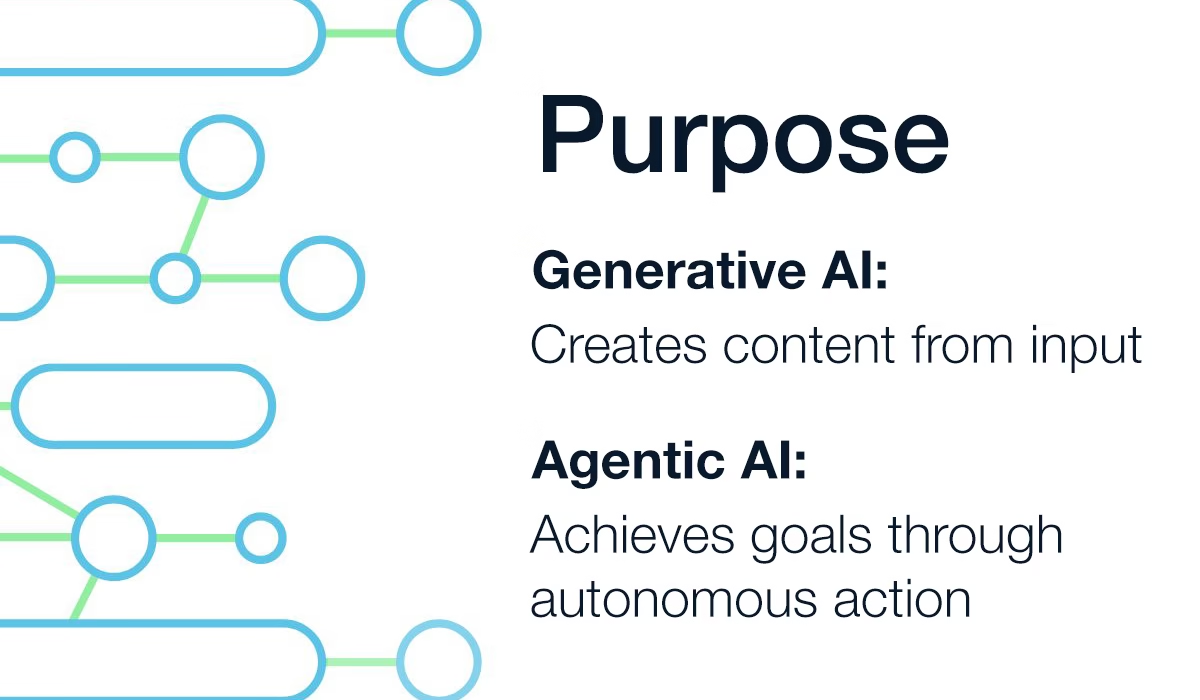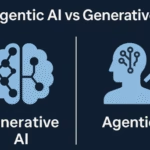“`html
Agentic AI vs. Generative AI: Understanding the New Frontiers of AI
Estimated reading time: 8 minutes
Key Takeaways
- The AI landscape is rapidly evolving, with distinct paradigms like Agentic AI and Generative AI emerging.
- Generative AI focuses on creating new content (text, images, code) by learning patterns from data.
- Agentic AI is characterized by autonomy, proactivity, and goal-oriented decision-making.
- While Generative AI *creates*, Agentic AI *acts* and *achieves*.
- These two forms of AI are not mutually exclusive and are poised to synergize in the future of AI automation.
- Understanding these differences is crucial for grasping the broader narrative of understanding AI evolution and the pace of AI innovation.
Table of Contents
- Introduction: Setting the Stage for AI Evolution
- Understanding Generative AI: What It Is and How It Works
- Unpacking Agentic AI: The Next Frontier in AI
- Agentic AI vs. Generative AI: The Key Differences Explained
- The Future of AI Automation: Where Are We Headed?
- The Impact of Agentic AI on Business: Transforming Industries
- Understanding AI Evolution: A Broader Perspective
- Conclusion: Navigating the Evolving AI Landscape
Introduction: Setting the Stage for AI Evolution
The world of Artificial Intelligence is experiencing an unprecedented surge in progress and public fascination. New capabilities are emerging at a breathtaking pace, fundamentally reshaping how we interact with technology and envision the future. Amidst this rapid evolution, two distinct but increasingly interconnected paradigms are at the forefront: Agentic AI and Generative AI. Understanding the core differences between these two approaches is essential for anyone looking to grasp the trajectory of AI innovation and its implications for AI automation. This exploration is part of a larger narrative focused on understanding AI evolution, and it’s clear that the pace of change is accelerating.”The pace of AI innovation is rapid, with breakthroughs constantly expanding what machines can accomplish.”
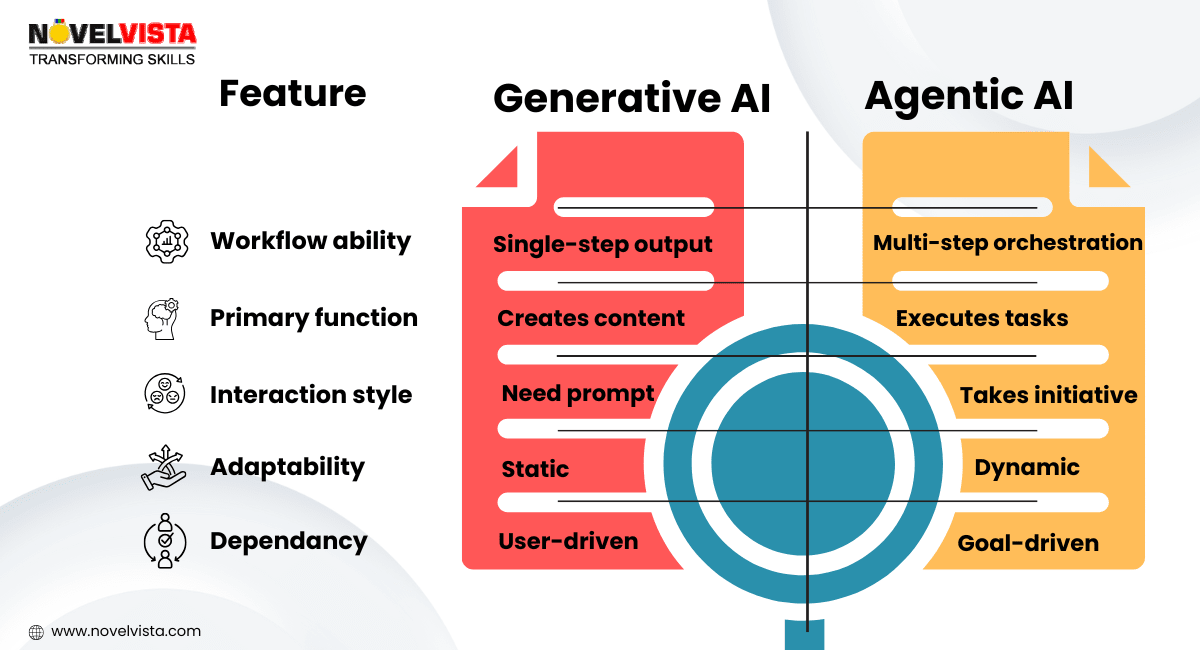
Understanding Generative AI: What It Is and How It Works
At its heart, Generative AI is about creation. It’s a type of artificial intelligence designed to produce novel outputs that mimic human-created content. This can include anything from text and code to images, music, and even synthetic data. The core mechanism involves training massive neural networks on vast datasets. By identifying and learning complex patterns, relationships, and styles within this data, generative models can then generate new, original content that is statistically similar to their training material. As noted by Wrike, Generative AI’s primary function is the creation of novel outputs.
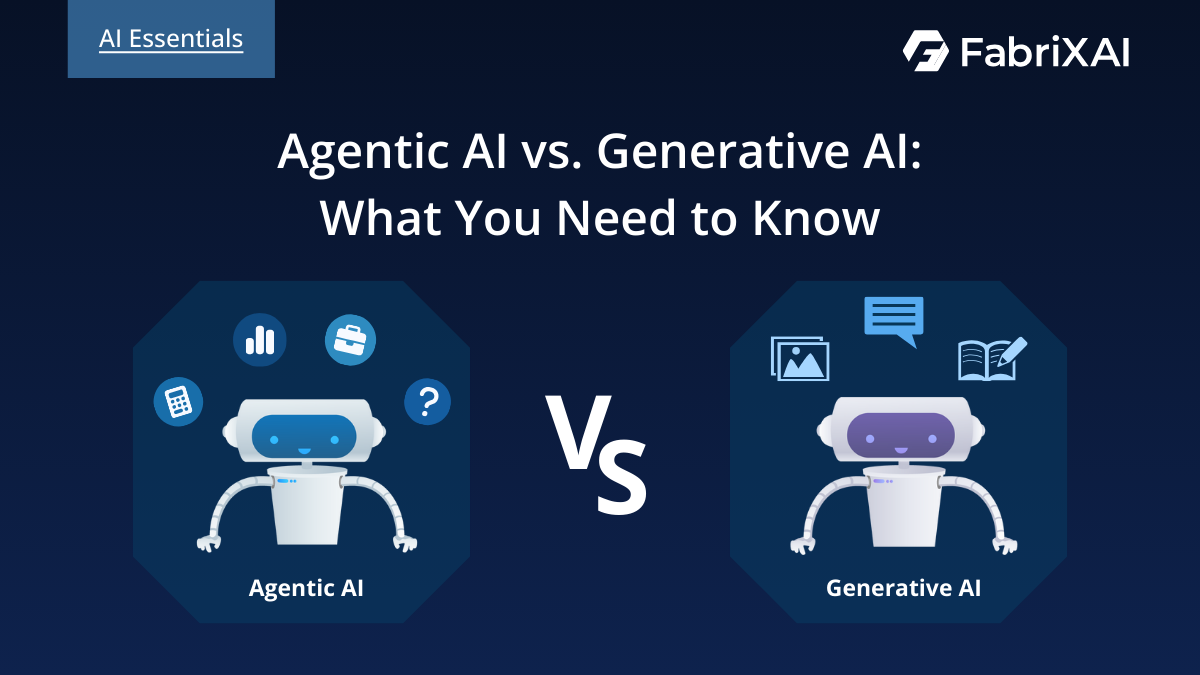
We’ve seen remarkable examples of generative AI in action:
- ChatGPT, which generates human-like text responses, making interactions feel natural and engaging.
- Tools like Midjourney or DALL-E that create stunning visual art and realistic images from simple textual prompts, showcasing the power of multimodal understanding. As Red Hat highlights, these models generate images from textual prompts.
- GitHub Copilot, which acts as an AI pair programmer, suggesting entire lines or blocks of code as developers write, significantly boosting productivity.

The underlying technology often relies on sophisticated architectures such as Large Language Models (LLMs), which are the backbone of many text-generation systems, or advanced image generation models like diffusion models and Generative Adversarial Networks (GANs). These models excel at predicting subsequent elements to construct coherent and novel content. Red Hat further elaborates on this by mentioning these architectures. The current impact of generative AI is undeniable, with widespread adoption in businesses for various applications including advanced content creation, sophisticated customer interaction through chatbots, automated code generation, and revolutionizing media production. Thomson Reuters and Wrike both emphasize its significant role in business applications.
Unpacking Agentic AI: The Next Frontier in AI
In contrast to generative AI’s focus on creation, Agentic AI is defined by its autonomy and proactive behavior. These AI systems are designed to act independently, make decisions, and take actions to achieve specific goals with minimal ongoing human intervention. This marks a significant shift towards more sophisticated AI capabilities. As Thomson Reuters, Red Hat, and Wrike collectively suggest, agentic AI embodies a higher degree of self-direction.
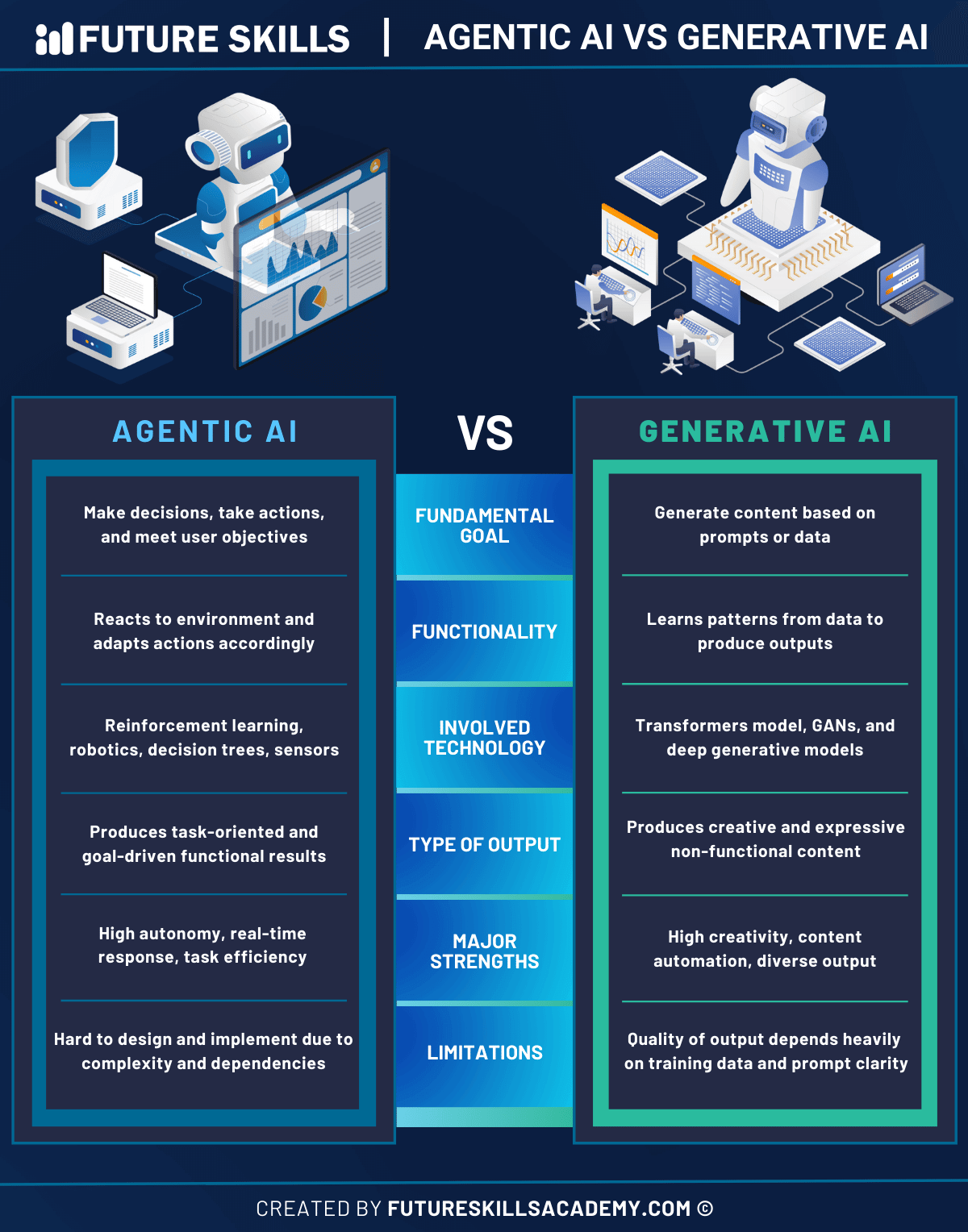
Key characteristics of Agentic AI include:
- Autonomy: The ability to operate independently and execute complex, multi-step processes without continuous human prompting. Salesforce highlights this crucial aspect of autonomous operation.
- Goal-orientation: Agentic AI systems can set and pursue their own subgoals, adapt their strategies dynamically based on the environment, and reason about context to achieve desired outcomes. Red Hat points out this strategic reasoning.
- Decision-making: These AIs are capable of adapting to new information or changing conditions, independently selecting the best course of action from multiple options. Red Hat and Wrike both emphasize this adaptive decision-making capacity.
- Proactivity: Instead of merely reacting to external stimuli or direct commands, agentic AI can initiate tasks and pursue objectives proactively. This is a key differentiator, as highlighted by a YouTube source.
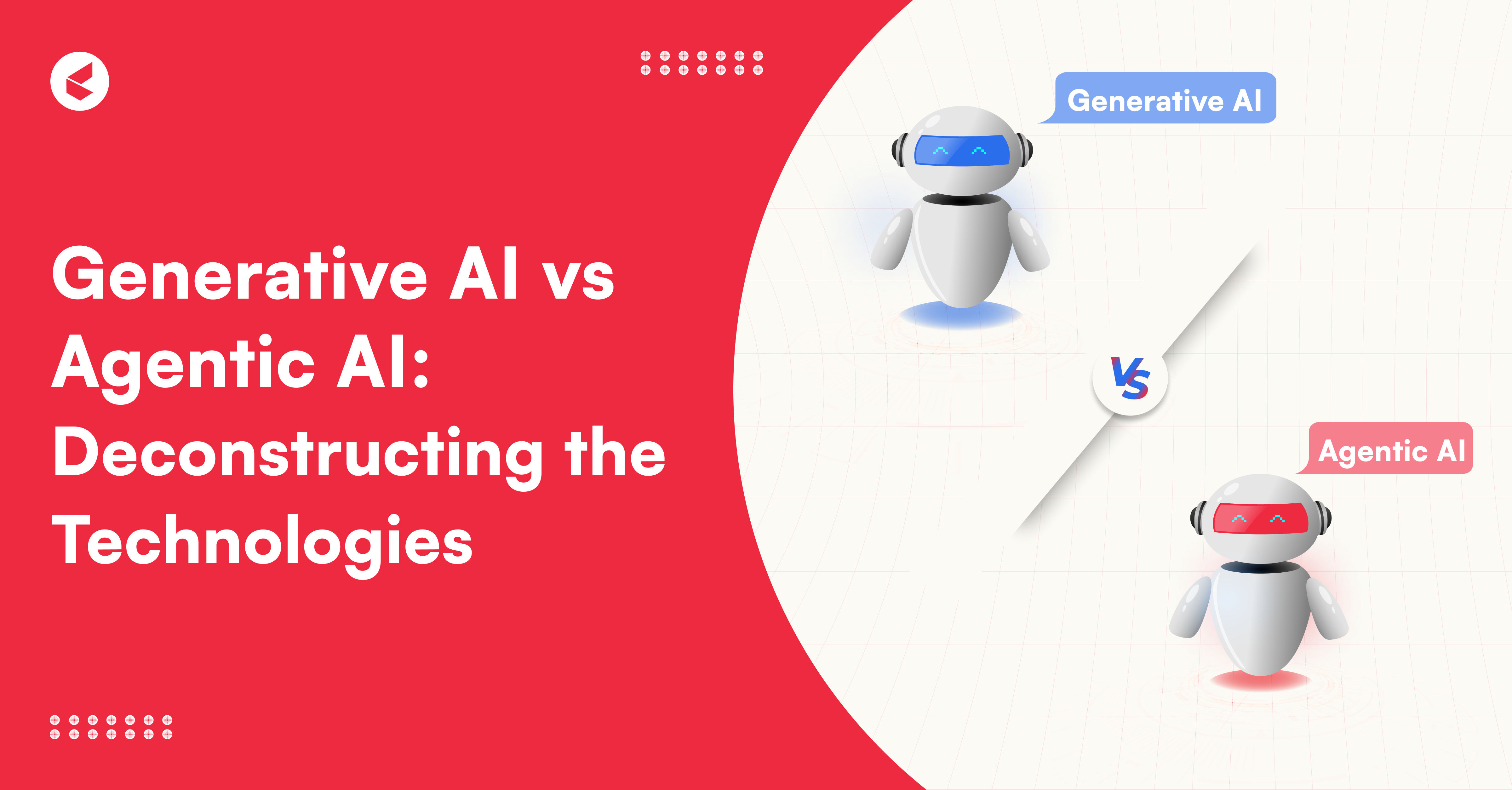
Illustrative examples of agentic AI in action are already emerging:
- Autonomous vehicles that continuously process sensor data to make real-time driving decisions, navigating complex environments safely. Red Hat cites autonomous vehicles as a prime example.
- Intelligent digital assistants that go beyond simple task execution to proactively manage schedules, respond to emails, and initiate follow-up actions based on context and learned user preferences.
- Specialized AI agents tasked with optimizing intricate processes like supply chain logistics, conducting complex research autonomously, or automating multifaceted business operations, demonstrating their ability to handle challenging, goal-driven tasks. Thomson Reuters and Wrike underscore these complex operational applications.
Agentic AI vs. Generative AI: The Key Differences Explained
To truly understand the evolving AI landscape, it’s crucial to pinpoint the fundamental distinctions between these two powerful AI paradigms:
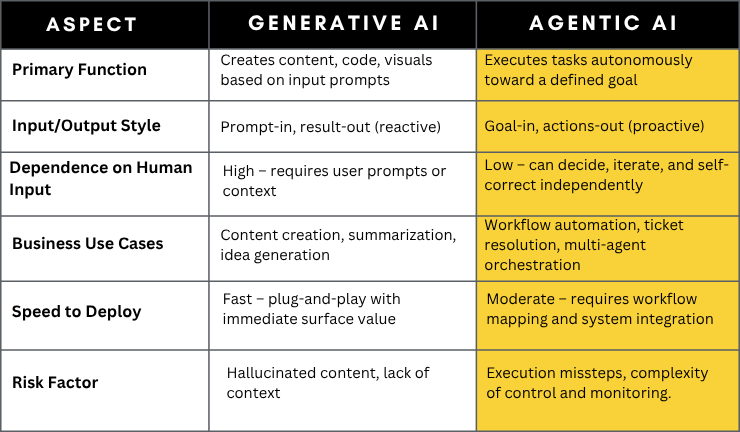
- Purpose/Function: Agentic AI is designed to *act* autonomously to achieve goals, whereas Generative AI is built to *create* novel content based on prompts and learned patterns.
- Autonomy Level: Agentic AI exhibits a high degree of autonomy, operating proactively with minimal human guidance. Generative AI, while powerful, typically has lower autonomy, requiring specific prompts for each generative action.
- Decision-Making: Agentic AI possesses the capability to reason, adapt to dynamic environments, and make independent choices. Generative AI, while sophisticated in its output, generally follows instructions with limited independent reasoning or adaptation outside its generative task.
- Interaction with Environment: Agentic AI can interact with, perceive, and potentially alter its environment to achieve its goals. Generative AI primarily produces outputs as data, without direct, consequential interaction with a physical or digital environment.
- Output Type: The output of Agentic AI is typically a series of actions, the completion of multi-step tasks, or the achievement of workflow outcomes. Generative AI’s output is content, such as text, images, or code.
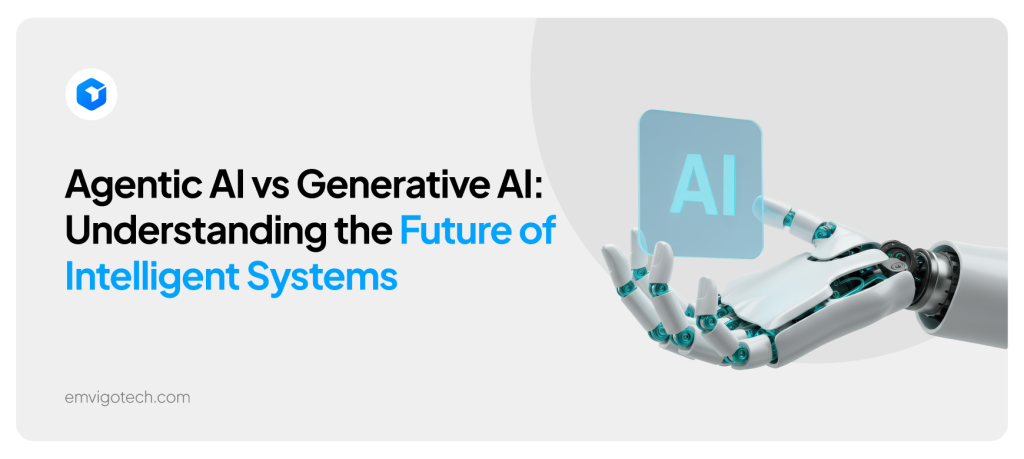
In essence, understanding the agentic AI vs generative AI explained difference boils down to their core functions: agentic AI *acts and achieves*, while generative AI *creates and responds*. Thomson Reuters, Red Hat, and Wrike all emphasize these distinct roles in their analyses, with a YouTube source further clarifying agentic AI’s proactive nature.
The Future of AI Automation: Where Are We Headed?
The convergence of Agentic AI and Generative AI is where the most exciting advancements in AI automation are expected. Imagine agentic systems that can not only make decisions and take actions but also leverage generative AI to draft reports, communicate findings in natural language, or even generate code as part of their broader goal-oriented operations. This synergy promises to unlock new levels of efficiency and capability. Red Hat and Thomson Reuters highlight this powerful combination, suggesting a future where AI can handle more complex, end-to-end automated processes.

We are moving towards a landscape populated by increasingly sophisticated, autonomous, and goal-directed AI systems. These systems will seamlessly blend the ability to act and adapt (agentic) with the capacity to create and communicate (generative), extending far beyond simple task automation. The anticipation for Generative AI trends 2025 points towards deeper integration across industries, the development of specialized multimodal models, and enhanced collaborative frameworks between human users and intelligent AI agents.
The Impact of Agentic AI on Business: Transforming Industries
The transformative potential of Agentic AI for businesses is immense, promising to drive significant change across various sectors. Its ability to handle complex, adaptive tasks with minimal human oversight offers a pathway to unprecedented operational efficiency and innovation.

Key business applications where agentic AI is set to make a substantial impact include:
- Enhanced Customer Service: AI agents can autonomously resolve complex customer issues, adapt to individual customer needs in real-time, and proactively offer personalized solutions, improving satisfaction and reducing support costs. Thomson Reuters and Red Hat note this efficiency gain.
- Streamlined Operations: Agentic AI can automate complex workflows, optimize intricate supply chain logistics by predicting demand and managing inventory, and handle intelligent scheduling and resource allocation, leading to significant operational improvements. Wrike points to these workflow optimizations.
- Personalized Experiences: By dynamically adjusting content delivery and tailoring service interactions based on agent-driven insights and decisions, businesses can create deeply personalized experiences for their customers, fostering loyalty and engagement. Thomson Reuters highlights this personalization.
- Advanced Decision Support: AI agents capable of analyzing vast amounts of market data, identifying subtle trends, and recommending strategic business decisions can empower leadership with data-driven insights, leading to more informed and effective strategies. Thomson Reuters and Wrike both underscore this strategic advantage.
The overall impact of agentic AI on business is one of profound transformation. It offers the potential to drive enhanced efficiency, foster rapid innovation, and provide a significant competitive advantage by automating complex, adaptive tasks and minimizing the reliance on constant human intervention. Salesforce, Thomson Reuters, and Wrike collectively emphasize the broad economic and operational benefits.
Understanding AI Evolution: A Broader Perspective
Placing agentic and generative AI within the larger trajectory of understanding AI evolution provides critical context. The journey of AI has been one of increasing sophistication and capability. We’ve moved from early, rigid rule-based systems that could only perform pre-defined tasks, to the era of machine learning, where AI could learn from data. Now, with generative AI, we see AI capable of creating content, and with agentic AI, we are witnessing AI that can act autonomously and pursue goals. Red Hat and Thomson Reuters both track this progression, highlighting how each stage builds upon the last.
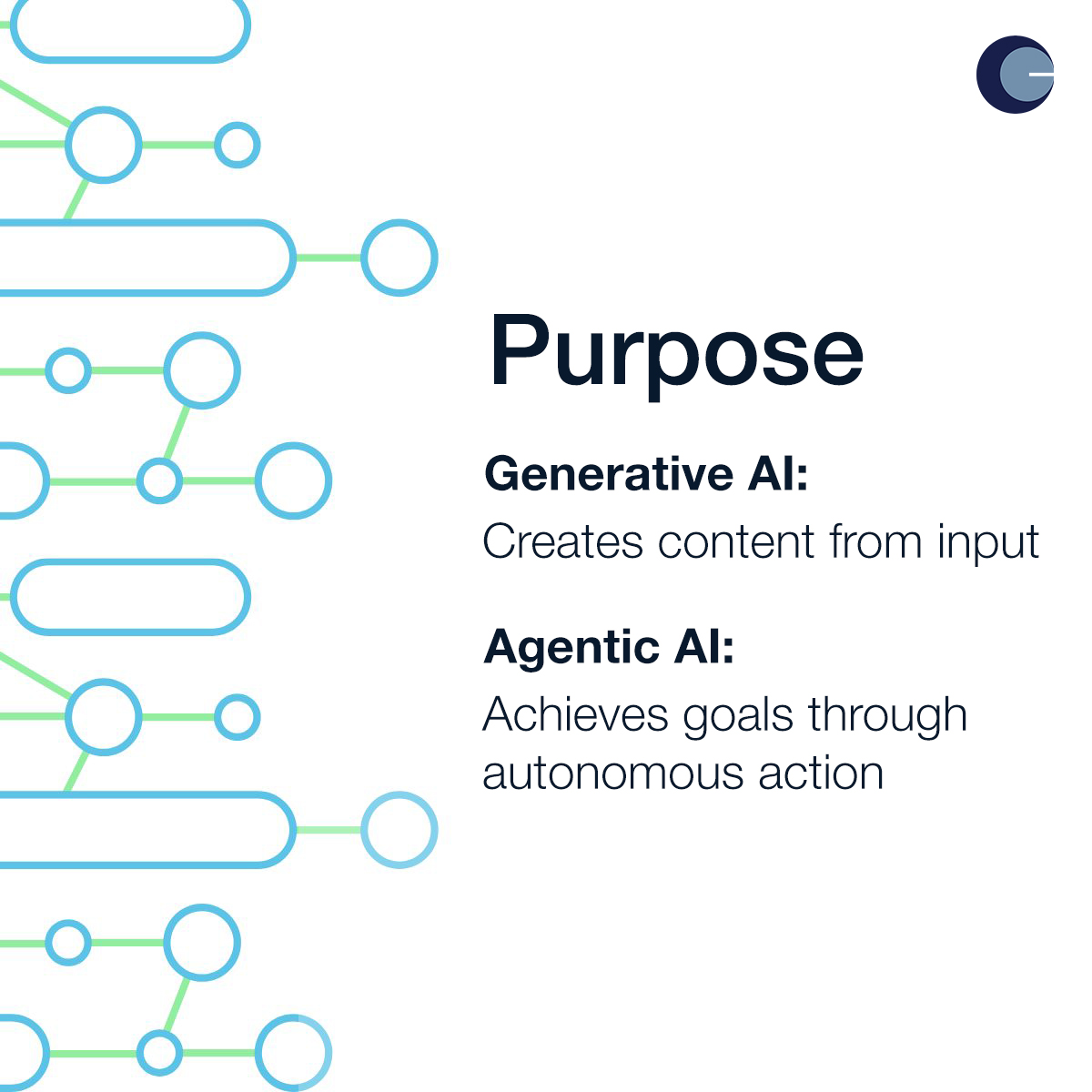
Looking ahead, future directions in AI development point towards even greater levels of AI agency, enhanced capabilities in complex decision-making, and more sophisticated collaboration between multiple intelligent agents working together to solve problems. This progression is not without its challenges, and it is crucial to briefly touch upon critical ethical considerations. As AI systems become more autonomous and capable, the importance of robust governance, rigorous validation processes, and effective oversight mechanisms grows exponentially. Responsible deployment requires careful attention to managing potential risks and ensuring that AI development aligns with human values and societal well-being. Thomson Reuters and Red Hat both stress the need for ethical frameworks and oversight in this evolving landscape.
Conclusion: Navigating the Evolving AI Landscape
In summary, the distinction between agentic AI and generative AI is fundamental to understanding the current and future state of artificial intelligence. While generative AI excels at creating novel content, agentic AI focuses on autonomous action and goal achievement. The ability to differentiate between these paradigms is crucial for comprehending the rapid advancements in AI and their potential applications. As these fields continue to develop, their synergy promises to unlock even more powerful and transformative capabilities, reshaping industries and our daily lives. Staying informed about these evolving technologies will be key to navigating the exciting future of AI.
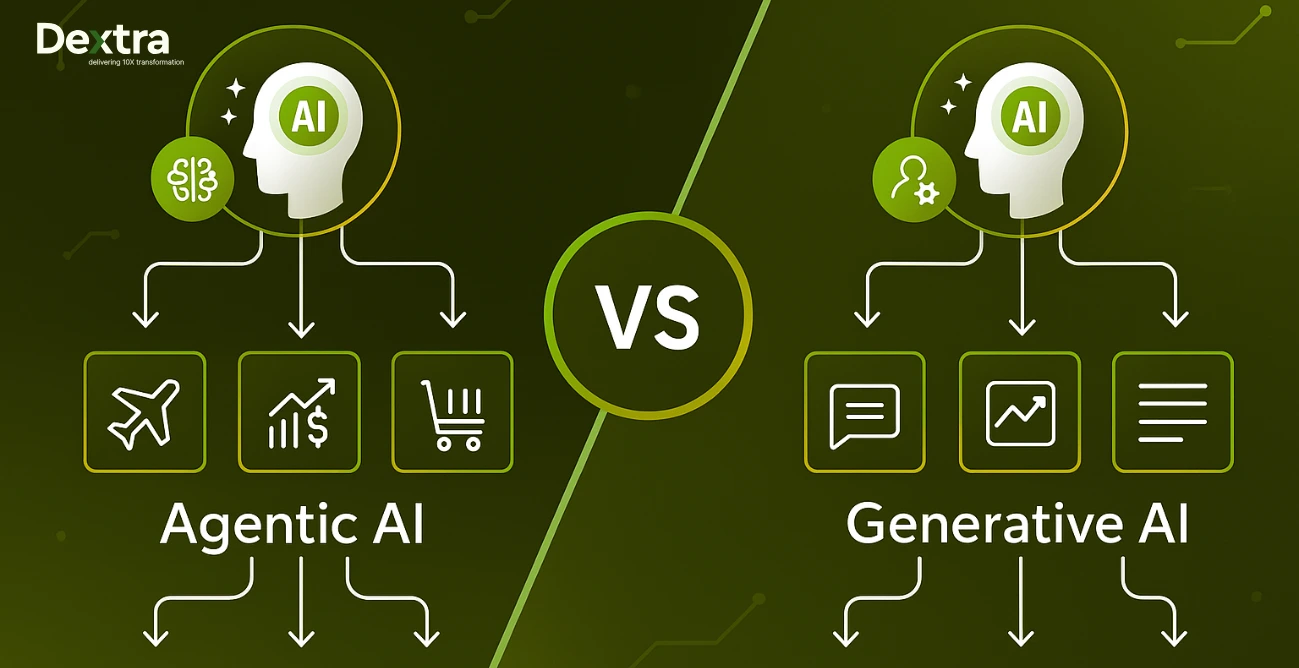
For further reading on the broader implications and exciting developments in AI, explore these resources:
- 10 Cutting-Edge AI Technologies Shaping the Future
- How AI is Changing the World
- How AI is Transforming Businesses
- Understanding New AI Regulations
- AI Fairness, Ethics, Bias, and Accountability
- Game-Changing AI-Powered Workspaces
- Powerful AI-Powered Collaboration for Remote Work
- Microsoft AI Agent News 2025
- Model Context Protocol (MCP) Explained
- Next-Level AI-Powered Sustainability
- Revolutionary AI Medical Breakthroughs in Healthcare
- AI Fraud Detection Revolutionizing Finance
- Game-Changing AI Marketing Tools
- Breakthrough AI Cyber Defense Revolution
- Explosive Cybersecurity Threats and 2025 Trends
- Unbeatable AI Cloud Security
- Revolutionary Edge Computing Breakthroughs
- Mind-Blowing Quantum Breakthroughs
- Unstoppable 5G Connectivity Future
- Game-Changing 5G-Powered Smart Cities
- Revolutionary Sustainable Computing
- Explosive AI-Powered Gaming Future
- Breakthrough AI Game Development
- Mind-Blowing VR Gaming Innovations
- Unbeatable AI-Powered Home Entertainment
- Explosive AI-Powered Virtual Assistants
- Revolutionary AI Search Technology
- Unstoppable AI-Generated Content Revolution
- Game-Changing AI-Powered Influencer Marketing
- Breakthrough AI-Generated Music
- Mind-Blowing AI-Powered CGI
- Unbeatable AI-Powered Smart Vehicles
- Explosive AI Drone Technology
- Game-Changing AI-Powered Space Tech
- Revolutionary AI-Powered Shopping Assistants
- AI Regulation and its Tech Industry Impact
- Critical AI Challenges in Tech 2025
- Google Gemini CLI Features for Developers
- Nvidia Stock and AI Growth Insights
- Amazon AWS and the Generative AI Workforce
- Alexandra Eala in the WTA Final
- India vs. England Women’s Cricket Highlights
- Three Mobile Compensation Claim
- HPE Juniper Acquisition Details
- Germany’s Deepseek App Ban
- Trump’s AI Executive Orders
- Meta’s Aggressive AI Hiring
- OpenAI’s Shift to Google TPUs for ChatGPT
- Chelsea vs. Benfica Club World Cup Result
- England U21 Euros Final Victory
- England U21 Euros Final Score
- Nvidia Insider Stock Sales Analysis
- Trump’s TikTok Buyer Group
- AI-Driven Emerging Tech Innovations 2025
- Premier League Transfer News: Arsenal
- Wimbledon 2025 Live Updates
- Fognini vs. Alcaraz Wimbledon Match
- Harry Kane’s Club World Cup Goals
- Sonay Kartal’s Wimbledon Upset
- Al Hilal vs. Man City Upset
- Fluminense Stuns Inter Milan in Club World Cup
- Father and Daughter Rescued from Disney Cruise
- Real Madrid vs. Juventus FIFA Club World Cup 2025
- Nothing Phone 3 Price and Specs
- Nothing Headphone (1) Ultimate Review
- TalkTalk’s Financial Problems in the UK
- Xiaomi SU7 EV Sales Figures
- UEFA Women’s Euro 2025 Guide
- Google AI Mode Features Explained
- India vs. England 2nd Test Live
- Cameron Norrie Wimbledon 2025 Match
- Aryna Sabalenka’s Wimbledon Title Chances
- Coco Gauff’s Wimbledon First-Round Loss
- Oliver Tarvet’s Wimbledon Prize Money
- Emma Raducanu’s Wimbledon Performance 2025
- Sunderland Sign Sadiki
- Is X (Twitter) Down?
- Red Dead Redemption PC Launch Details
- Free Prime Games July 2025
- Tyson Fury’s Boxing Comeback 2026
- Diogo Jota Death News (False Report)
- Diogo Jota Car Crash Details (False Report)
- Helldivers 2 Xbox Release Date
- Educational Tech for Faster Learning
- Marin Cilic’s Wimbledon 2025 Comeback
- Peter Rufai Death (False Report)
- Samsung Galaxy Z Fold 7 Dimensions Leak
- Xbox Layoffs and Future Impact
- Jan-Lennard Struff’s Career Rise
- Carlos Alcaraz’s Wimbledon Dominance
- Samsung Galaxy Z Fold 7 Review
- Google Pixel Headphones with Gemini AI
- Nothing x Bose Ultra Review
- Huawei AI Computing vs. Nvidia
- Perplexity Comet AI Browser Features
- Cloudflare Q2 Threats 2025
- AI Workflow Automation for Businesses
- Google Pixel 9 AI Camera Features
- Human-Like AI Conversations and Voice
- AI Impact on UK Jobs
- Top AI Trends to Watch in 2025
- M5 MacBook Pro Release Date 2025
- AI Solutions for Traffic Congestion
- Non-Invasive Wearable Glucose Monitors
- AlphaFold 3 AI Drug Discovery
- Apple M4 Chip Performance
- Apple App Store EU Antitrust Violations
- Samsung Galaxy Z Fold 6 Pre-Order Deals
- iPhone 17 Camera Upgrades and AI
- Apple Vision Pro AI Integration
- Apple Vision Pro AI Integration: A New Chapter
- Apple Intelligence on iPhone 16
- Apple Vision Pro 2 Launch 2025
- Honor Magic V5 vs. Z Fold 7
- Ingram Micro Ransomware Attack
- Supercell’s Mobile Gaming Strategy
- Apple AI Executive Leaves for Meta
- Grok AI Chatbot Controversy
- Nvidia’s Influence on AI Impact
- Reasons Linda Yaccarino is Leaving X
- Is Microsoft Outlook Down?
“`


